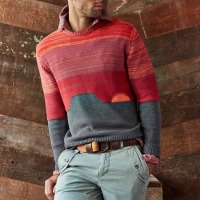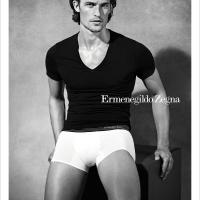ELIE TAHARI FALL 2011 MENSWEAR
Alert the Commander in Chief: There’s been a military leak. Thankfully, it’s mostly of blankets. The iconic stripe covers favored by the armed forces have been exerting a strong influence on menswear of late. Styles inspired by them turned up at Iceberg, at Tommy Hilfiger, and again this week at Elie Tahari. The label’s creative director, Kobi Halperin, at least, has a better claim on the style than most. «I was in the military,» he explained during a presentation at the Tahari showroom. «It’s nice to be turning a very dusty and unpleasant experience into the beautiful glamour of fashion.»
Military influence in menswear is nothing new, but here it was managed ably. In a palette of tobacco, charcoal, black, and gray, tailored takes on army gear predominated. Stripe details, often in mixed materials, appeared on vests, work shirts, jackets, and as tuxedo piping on flat-front, slightly tapered pants. Outerwear is one of Tahari’s strongest men’s categories for sales, and two car coats—one in that dusty tobacco, with a contrast collar, another in black, with contrast leather sleeves—were worth saluting.




























































































































































